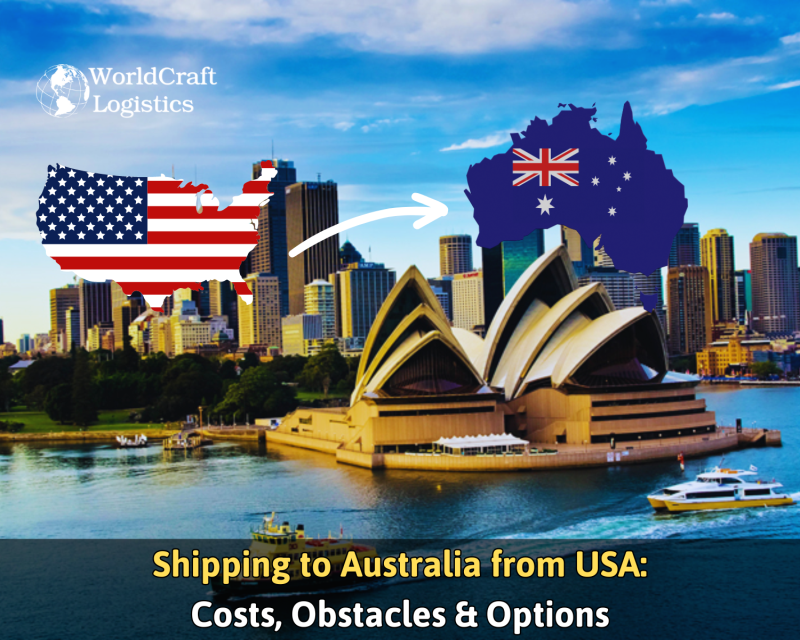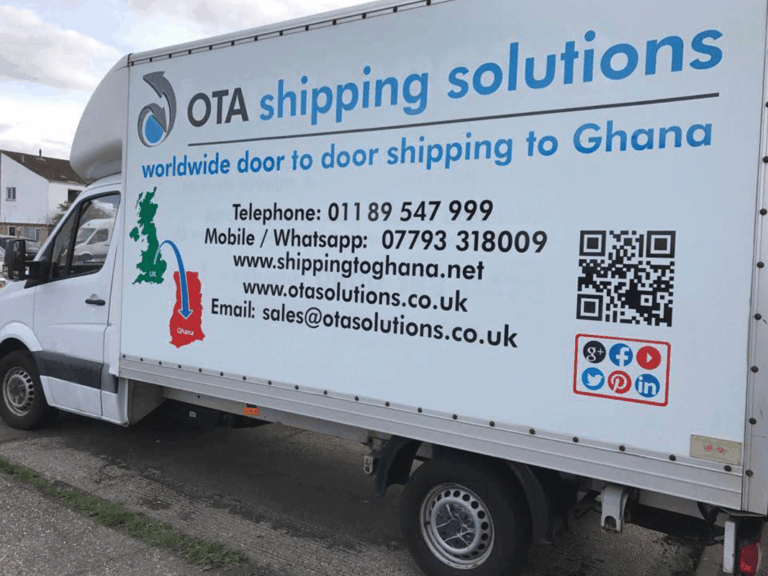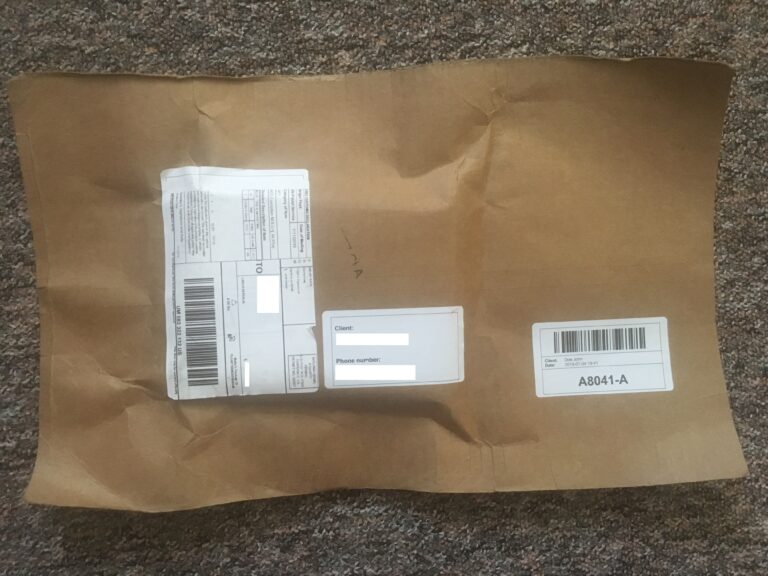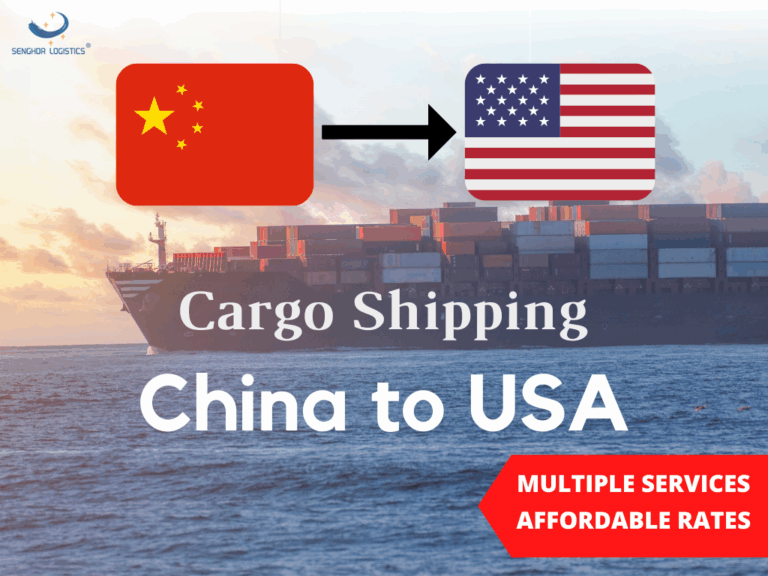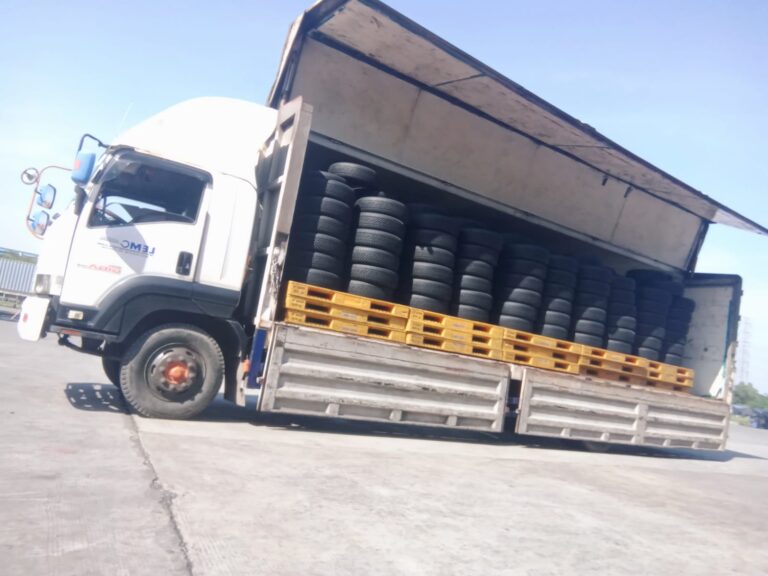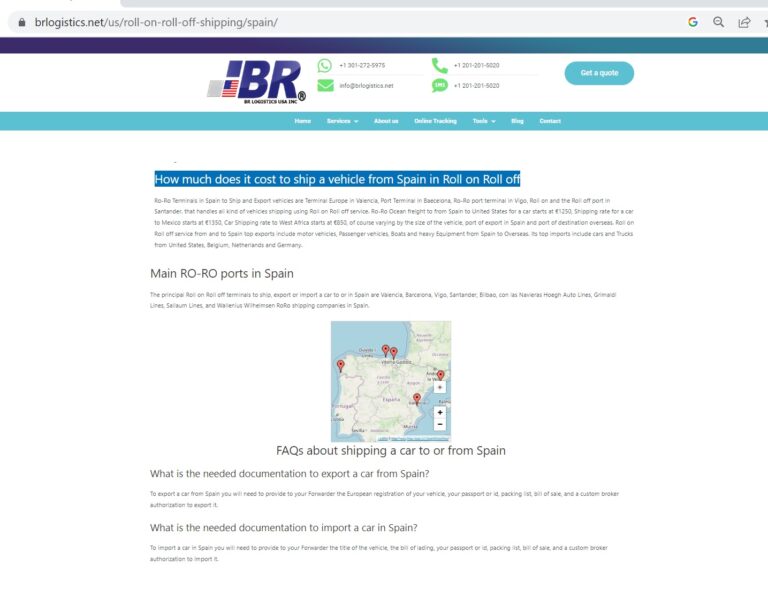Shipping From Us To Au: The Ultimate Guide (2025)
Your Complete Guide to shipping from us to au
Navigating the Complexities of International Shipping
Shipping goods from the United States to Australia presents a unique set of challenges that can be daunting for businesses, especially those new to international trade. One of the most pressing concerns is understanding the intricacies of customs regulations and ensuring compliance to avoid costly delays. With Australia’s stringent import rules, businesses must not only navigate the logistics of shipping but also the legalities surrounding customs clearance. Failure to do so can lead to unexpected fees, shipment returns, or even confiscation of goods, which can severely impact a company’s bottom line and reputation.
In this comprehensive guide, we will delve into the essential components of shipping from the U.S. to Australia. We will explore various shipping methods available, from air freight to ocean shipping, and help you determine which option aligns best with your business needs. Understanding the cost structure is crucial; therefore, we will break down shipping costs, including factors such as weight, size, and additional services that may affect your budget.
Transit times are another critical aspect we will cover, as timely delivery can be a deciding factor for many businesses. We will provide insights into the expected shipping durations for different methods and the variables that can influence these timelines. Knowing how to accurately calculate and anticipate these timeframes can enhance your logistical planning and improve customer satisfaction.
Customs regulations can often feel like a labyrinth of rules and guidelines. This guide will clarify the customs processes, including how duties and taxes are calculated, what documentation is required, and how to avoid common pitfalls that could delay your shipments. Additionally, we will discuss potential risks associated with international shipping, such as damage, loss, and compliance issues, and how to mitigate these risks effectively.
By the end of this guide, you will gain expert knowledge and practical strategies to navigate the complexities of shipping from the U.S. to Australia efficiently. Armed with this information, your business will be better prepared to manage shipments, minimize costs, and ensure timely deliveries, ultimately paving the way for successful international trade operations. Whether you are an importer, exporter, or business owner, this guide is your key to mastering the art of shipping across borders.
Table of Contents
- Your Complete Guide to shipping from us to au
- Understanding Your Shipping Options: A Detailed Comparison
- Deconstructing the Cost: A Full Pricing Breakdown
- Transit Time Analysis: How Long Will It Take?
- Navigating Customs Clearance: A Step-by-Step Guide
- A Practical Guide to Choosing Your Freight Forwarder
- Incoterms 2020 Explained for Shippers
- Risk Management: Identifying and Mitigating Common Shipping Problems
- Frequently Asked Questions (FAQs) for shipping from us to au
- Conclusion: Key Takeaways for Successful Shipping
- Important Disclaimer
Understanding Your Shipping Options: A Detailed Comparison
Overview of Shipping Methods from the U.S. to Australia
When it comes to shipping from the United States to Australia, businesses have various transportation options to consider. Each method offers unique advantages and disadvantages based on factors such as cost, speed, and the nature of the goods being shipped. Below is a comparison table to help you understand the different shipping methods available.
| Shipping Method | Best For | Speed | Cost Level | Key Advantages | Key Disadvantages |
|---|---|---|---|---|---|
| Sea FCL | Large shipments | 20-40 days | Low | Cost-effective for bulk; No weight limits | Long transit time; Port fees |
| Sea LCL | Smaller shipments | 20-40 days | Moderate | Flexible for smaller loads; Shared container | Higher cost per cubic meter; Longer processing time |
| Air | Time-sensitive goods | 1-5 days | High | Fastest option; Reliable | Expensive; Weight limits |
| Rail | Inland transportation | 5-10 days | Moderate | Eco-friendly; Good for landlocked areas | Limited routes; Slower than air |
| Express | Urgent deliveries | 1-3 days | Very High | Quick delivery; Comprehensive tracking | Very expensive; Size restrictions |
Detailed Breakdown of Each Method
Sea FCL (Full Container Load)
What It Is:
Sea FCL involves shipping a full container exclusively for your cargo. This method is ideal for large shipments that can fill a 20ft or 40ft container.
When to Use It:
Use FCL when you have enough goods to fill an entire container, making it a cost-effective choice for bulk shipments.
Pros:
– Lower cost per unit for large volumes.
– Complete control over shipping schedules and container contents.
– Less risk of damage as the entire container is dedicated to your cargo.
Cons:
– Longer transit times, often ranging from 20 to 40 days.
– Possible port fees and customs delays.
– Requires significant planning and management of logistics.
Sea LCL (Less than Container Load)
What It Is:
Sea LCL allows multiple shippers to share a single container. This method is suitable for shipments that do not require a full container.
When to Use It:
Choose LCL when you have smaller shipments that do not justify the cost of an entire container.
Pros:
– Cost-effective for smaller shipments.
– Flexible shipping schedules as you can ship smaller volumes.
– Reduces storage costs as you can ship as needed.
Cons:
– Higher cost per cubic meter compared to FCL.
– Longer processing and transit times, as cargo needs to be consolidated.
– Increased risk of damage due to handling with other cargo.
Air Freight
What It Is:
Air freight involves transporting goods via aircraft, making it the fastest shipping option available.
When to Use It:
Use air freight for time-sensitive shipments, such as perishable goods or urgent business documents.
Pros:
– Fastest shipping method, typically taking 1-5 days.
– High reliability and fewer delays.
– Comprehensive tracking options.
Cons:
– Significantly higher costs compared to sea freight.
– Weight and size restrictions can limit what can be shipped.
– Limited cargo capacity per flight.
Rail Transport
What It Is:
Rail transport involves moving goods via train, primarily used for inland shipments from ports to distribution centers.
When to Use It:
Use rail for bulk shipments over land, particularly if you are shipping to or from landlocked areas.
Pros:
– Eco-friendly option with lower carbon emissions.
– Cost-effective for large shipments over land.
– Generally reliable and safe.
Cons:
– Limited routes and availability compared to other methods.
– Slower than air freight, taking 5-10 days.
– May require additional transport to and from rail terminals.
Express Shipping
What It Is:
Express shipping is a premium service that guarantees quick delivery, often within 1-3 days.
When to Use It:
Choose express shipping for urgent deliveries that require the fastest possible transit.
Pros:
– Extremely fast delivery times.
– Advanced tracking and customer service.
– Ideal for critical shipments.
Cons:
– Very high costs, making it impractical for larger shipments.
– Size and weight restrictions can limit the types of goods shipped.
– Potential for delays due to customs or weather.
Special Considerations
Multimodal Transport
Multimodal transport involves using two or more different modes of transport to move goods from the sender to the receiver. This method can optimize costs and transit times by combining the strengths of various shipping methods. For example, a shipment might travel by sea to Australia and then be transported by rail to its final destination. Multimodal transport requires careful planning and coordination among different carriers.
Specialized Options
- RoRo (Roll-on/Roll-off): This method is specifically for vehicles and large machinery. Vehicles are driven onto the ship and secured for transport. It is efficient for transporting cars, trucks, and heavy equipment.
- Break Bulk: This shipping method is used for large, heavy items that cannot fit in standard containers. Goods are loaded directly onto the vessel and require specialized handling.
Conclusion
Selecting the appropriate shipping method from the U.S. to Australia depends on your specific needs, including shipment size, urgency, and budget. Understanding the advantages and disadvantages of each method is crucial for making informed decisions that align with your business objectives. By evaluating your shipping requirements and considering options like multimodal transport, you can optimize your logistics strategy for successful international shipping.
Deconstructing the Cost: A Full Pricing Breakdown
Main Cost Components
When considering shipping from the U.S. to Australia, it’s essential to understand the various cost components that contribute to the overall shipping expense. These costs can be broadly categorized into three main components: Main Freight, Origin Charges, and Destination Charges. Each of these components plays a significant role in determining the total cost of shipping.
Main Freight
This is the primary cost associated with moving your goods from the origin (U.S.) to the destination (Australia). Main freight costs can vary based on the mode of transport—be it sea freight or air freight.
-
Sea Freight: Generally, shipping by sea is more economical for larger shipments, but it takes longer. The cost is influenced by factors such as the size of the container (20ft, 40ft), the distance to the port of loading, and the shipping line used.
-
Air Freight: This option is faster but tends to be more expensive per kilogram. The price is influenced by the weight of the package, the dimensions, and any additional services like expedited handling.
Origin Charges
Origin charges encompass all costs incurred before the goods leave the U.S. These charges can include:
-
Packaging Costs: Proper packaging is crucial for ensuring the safe transport of goods. Costs can vary significantly depending on the materials used and the complexity of the packaging.
-
Documentation Fees: This includes costs for preparing necessary shipping documents such as the Bill of Lading, commercial invoice, and export licenses.
-
Pickup Fees: If a freight forwarder is used, there may be charges for picking up the goods from the seller’s location.
-
Loading Charges: These are fees associated with loading the goods onto the transport vehicle, whether it be a truck for air freight or a container ship for sea freight.
Destination Charges
Destination charges are incurred once the shipment arrives in Australia. Key components include:
-
Unloading Fees: These are charges for unloading the cargo from the transport vehicle upon arrival.
-
Customs Duties and Taxes: Customs duties are typically applied if the value of the goods exceeds AU$1,000, while GST (Goods and Services Tax) may also be applicable. The specific rates depend on the type of goods being shipped.
-
Delivery Fees: This encompasses the cost of transporting the goods from the port or airport to the final destination in Australia.
-
Storage Fees: If the goods are not picked up promptly, there may be additional storage fees at the warehouse or port.
Detailed Cost Factor Analysis
Main Freight Cost Influencers
- Mode of Transport: As previously mentioned, air freight is usually more expensive than sea freight.
- Weight and Volume: Heavier and bulkier shipments incur higher costs.
- Shipping Route: Direct routes may be more costly, while indirect routes may offer savings but take longer.
Origin Charges Influencers
- Shipping Volume: Higher volumes can sometimes lead to discounts on packaging and loading.
- Service Providers: Different freight forwarders may have varying fee structures, impacting overall costs.
- Regulatory Compliance: Additional documentation for regulated items can increase fees.
Destination Charges Influencers
- Type of Goods: Certain goods may attract higher customs duties and taxes.
- Delivery Location: Remote areas may incur additional delivery fees.
- Customs Processing Time: Delays in customs can lead to storage fees.
Example Pricing Table
Below is a sample pricing table for shipping options, specifically focusing on sea freight from China to the USA and air freight costs. Please note that these prices are estimates and can vary widely based on specific circumstances.
| Shipping Method | Size/Weight | Estimated Cost (USD) | Notes |
|---|---|---|---|
| Sea Freight | 20ft Container | $1,500 – $3,000 | Varies by shipping line and route |
| Sea Freight | 40ft Container | $2,500 – $4,500 | Varies by shipping line and route |
| Sea Freight | LCL (per CBM) | $100 – $200 | Based on volume; cost-effective for small shipments |
| Air Freight | Up to 100 kg | $5 – $10 per kg | Price increases with weight |
| Air Freight | 100 kg and above | $4 – $8 per kg | Discounts may apply for larger shipments |
Disclaimer: The above costs are estimates and should be verified with specific freight forwarders or shipping companies for accurate pricing based on current market rates and specific shipment details.
How to Reduce Costs
Shipping costs can add up quickly, but there are several strategies businesses can employ to minimize expenses:
-
Consolidate Shipments: Combine smaller shipments into one larger shipment to take advantage of economies of scale. This is especially useful for businesses shipping frequently.
-
Choose the Right Shipping Method: Assess whether air or sea freight is more suitable for your needs. For non-time-sensitive shipments, sea freight is generally more cost-effective.
-
Negotiate Rates: Build relationships with freight forwarders and negotiate better rates based on shipping volume and frequency.
-
Optimize Packaging: Use cost-effective and efficient packaging to reduce dimensional weight charges, which can significantly impact air freight costs.
-
Understand Customs Regulations: Familiarize yourself with customs duties and taxes to avoid unexpected costs. Proper documentation can also expedite customs clearance, reducing storage fees.
-
Utilize Technology: Use shipping software and tools to compare rates from multiple carriers, helping you find the best deals.
-
Plan Ahead: Allow for extra time in your shipping schedules. Last-minute shipments often incur premium charges, so planning can save money.
By understanding the various cost components associated with shipping from the U.S. to Australia and implementing strategies to reduce expenses, businesses can optimize their shipping processes and improve their bottom line.
Transit Time Analysis: How Long Will It Take?
Understanding Transit Times for Shipping from the U.S. to Australia
When planning shipments from the United States to Australia, understanding the various factors that influence transit times is crucial for effective logistics management. Below, we break down the key variables affecting shipping duration and provide an estimated transit time table to help businesses anticipate delivery schedules.
Factors Influencing Transit Time
-
Shipping Mode: The choice between air freight and sea freight significantly impacts transit time. Air freight is faster, typically taking a few days, while sea freight can take several weeks due to longer travel distances and additional handling times at ports.
-
Port Congestion: Major ports in the U.S. and Australia can experience congestion due to various reasons, including seasonal demand spikes, labor strikes, or operational inefficiencies. Congestion can lead to delays in loading and unloading cargo, affecting overall transit times.
-
Customs Clearance: Customs processes in both the U.S. and Australia can also introduce delays. Shipments must comply with regulations, and any discrepancies in documentation can lead to additional inspections or clearance times. Businesses should ensure that all paperwork is completed accurately to minimize hold-ups.
-
Shipping Routes: The specific shipping route chosen can influence transit times. Direct routes typically result in faster delivery, while routes with multiple stops or transfers may prolong the shipping duration.
-
Weather Conditions: Seasonal weather patterns can disrupt shipping schedules. For instance, storms or adverse weather can lead to flight cancellations or delays in vessel departures and arrivals.
-
Additional Services: Opting for premium shipping services can expedite transit times, but at a higher cost. Services such as express shipping or priority handling can significantly reduce delivery times, making them ideal for time-sensitive shipments.
Estimated Transit Time Table
Here’s a realistic estimate of transit times for shipments from the U.S. to Australia, considering different shipping methods:
| Origin | Destination | Sea Freight (Days) | Air Freight (Days) |
|---|---|---|---|
| Los Angeles, CA | Sydney, AU | 25-35 | 3-5 |
| New York, NY | Melbourne, AU | 25-35 | 3-5 |
| Chicago, IL | Brisbane, AU | 25-35 | 3-5 |
| Seattle, WA | Perth, AU | 30-40 | 3-6 |
| Houston, TX | Adelaide, AU | 25-35 | 4-6 |
Context and Explanation
The transit time estimates provided in the table are based on typical port-to-port durations. It is essential to understand that these times do not account for potential delays due to customs clearance, port congestion, or weather-related disruptions.
For businesses, planning for delays is crucial. It is advisable to add buffer time to the estimated transit durations, especially for time-sensitive shipments. When using air freight, while transit times are significantly shorter, customs clearance still plays a critical role in overall delivery time. Similarly, sea freight may seem economical, but the longer transit times and potential for unforeseen delays should be factored into supply chain planning.
To ensure smoother shipping experiences, businesses should maintain open communication with logistics providers, stay updated on current shipping conditions, and prepare all necessary documentation well in advance. Utilizing tracking tools and services can also provide real-time updates, helping businesses manage customer expectations effectively.
By understanding the dynamics of shipping times and planning accordingly, businesses can optimize their logistics strategies and ensure timely deliveries from the U.S. to Australia.
Navigating Customs Clearance: A Step-by-Step Guide
The Process Explained
Shipping goods from the U.S. to Australia involves navigating customs clearance, which can be a complex process. Here’s a step-by-step guide to help you understand the typical workflow:
- Preparation of Shipment:
-
Ensure that your goods are properly packaged and labeled. Each package should clearly indicate the contents, weight, and dimensions to facilitate smooth customs processing.
-
Documentation Gathering:
-
Compile all necessary documentation, which includes the Commercial Invoice, Packing List, and any other relevant documents. Accurate and complete documentation is crucial for avoiding delays.
-
Customs Declaration:
-
Submit a customs declaration to the Australian Border Force (ABF). This declaration provides information about the shipment, including its value, contents, and intended use.
-
Duty and Tax Assessment:
-
The ABF will assess your shipment for applicable duties and taxes based on its declared value, the type of goods, and the applicable HS Codes.
-
Payment of Duties and Taxes:
-
Once the assessment is complete, you will need to pay any duties and taxes before your goods can be released. This can often be done online through the ABF’s website.
-
Customs Inspection:
-
In some cases, your shipment may be selected for inspection by customs officials. This is a routine procedure aimed at ensuring compliance with import regulations.
-
Release of Goods:
- After successfully passing through customs, your shipment will be released for delivery to its final destination in Australia.
Essential Documentation
Proper documentation is vital for ensuring a smooth customs clearance process. Below are the key documents required for shipping from the U.S. to Australia:
- Commercial Invoice:
-
This document serves as a bill for the goods being shipped. It includes details such as the seller’s and buyer’s information, a description of the goods, their value, and payment terms. The invoice must be accurate, as it is used to assess duties and taxes.
-
Packing List:
-
This document provides a detailed list of the items included in the shipment. It helps customs officials verify the contents of the shipment against the commercial invoice and ensures that all items are accounted for.
-
Bill of Lading (BOL):
-
The BOL is a contract between the shipper and the carrier that outlines the details of the shipment, including the route, delivery address, and terms of carriage. It serves as proof of shipment and is essential for tracking.
-
Import Declaration:
-
An import declaration is required by the ABF and must be submitted for all shipments valued over AU$1,000. This document includes information about the goods and their intended use.
-
Certificate of Origin (if applicable):
- This document certifies the country of origin of the goods. It may be required for certain products, particularly those that qualify for preferential tariff treatment under trade agreements.
Duties, Taxes, and HS Codes
When shipping to Australia, understanding how duties and taxes are calculated is crucial for budgeting your shipping costs.
- HS Codes:
-
Harmonized System (HS) Codes are internationally standardized numerical codes used to classify traded products. Each product category has a specific HS Code that determines the applicable duty rates and taxes. Accurate classification using the correct HS Code is essential to avoid overpaying or underpaying duties.
-
Duties and Taxes Calculation:
- Duties and taxes are assessed based on the declared value of the goods, the HS Code, and whether the goods are for commercial or personal use. For commercial imports valued over AU$1,000, customs duties may apply, whereas goods under this threshold may be exempt from duties but still subject to Goods and Services Tax (GST) of 10%. Additionally, certain goods, such as tobacco and alcohol, are subject to strict regulations and higher duty rates.
Common Problems & Solutions
While navigating customs clearance, shippers may encounter several common issues. Here are a few problems and practical solutions:
- Incomplete Documentation:
- Problem: Missing or inaccurate documents can lead to shipment delays or rejection.
-
Solution: Double-check all required documents before shipping. Utilize a checklist to ensure completeness.
-
Incorrect HS Code Usage:
- Problem: Misclassification of goods can result in incorrect duty assessments and potential fines.
-
Solution: Conduct thorough research or consult with a customs broker to ensure the correct HS Code is applied.
-
Unforeseen Duties and Taxes:
- Problem: Unexpected costs can arise if duties and taxes are not accurately estimated.
-
Solution: Use tools like Landed Cost Estimators provided by logistics companies to calculate potential costs upfront.
-
Customs Inspections:
- Problem: Random inspections can cause delays in shipment delivery.
-
Solution: Ensure compliance with all regulations and provide complete, accurate information to minimize inspection likelihood.
-
Prohibited Items:
- Problem: Shipping prohibited or restricted items can lead to confiscation and penalties.
- Solution: Familiarize yourself with Australia’s import restrictions and verify that your goods comply with these regulations before shipping.
By following this step-by-step guide, understanding the essential documentation, and being aware of common pitfalls, businesses can effectively navigate the customs clearance process when shipping from the U.S. to Australia. With careful preparation and attention to detail, you can ensure that your shipments arrive promptly and without unnecessary complications.
A Practical Guide to Choosing Your Freight Forwarder
Understanding the Role of a Freight Forwarder
When shipping goods from the United States to Australia, selecting the right freight forwarder is crucial for ensuring a smooth and efficient shipping process. Freight forwarders act as intermediaries between shippers and transportation services, providing expertise in logistics, customs regulations, and cost management. Here’s how to choose the right partner for your needs.
Key Qualities to Look For
-
Experience and Expertise
Look for a freight forwarder with a proven track record in international shipping, particularly between the U.S. and Australia. They should have in-depth knowledge of customs regulations, shipping routes, and potential challenges specific to this trade lane. -
Extensive Network
A robust global network is essential for timely deliveries. The freight forwarder should have established relationships with carriers, customs brokers, and local agents in Australia to facilitate seamless operations and reduce transit times. -
Proper Licensing and Certifications
Ensure that the freight forwarder holds the necessary licenses and certifications, such as being a registered International Freight Forwarder and having appropriate insurance. This not only ensures compliance with regulations but also provides peace of mind regarding liability and coverage. -
Transparent Communication
Choose a forwarder who prioritizes clear and prompt communication. They should provide updates throughout the shipping process and be easily reachable for inquiries. Effective communication helps in addressing potential issues before they escalate. -
Technology and Tracking Capabilities
In today’s digital age, a forwarder should utilize advanced technology for tracking shipments and managing logistics. Look for features such as online tracking, automated updates, and integrated systems that allow for real-time data access.
Sourcing Checklist for Your Freight Forwarder
When searching for the right freight forwarder, follow these steps to ensure a thorough selection process:
-
Define Your Shipping Needs
Assess your specific shipping requirements, including the type of goods, volume, frequency of shipments, and whether you need additional services like warehousing or customs clearance. -
Research Potential Forwarders
Conduct thorough research on potential freight forwarders. Look for companies that specialize in U.S.-Australia shipping and read reviews to gauge their reputation and reliability. -
Request Quotes
Once you have shortlisted a few candidates, request quotes. Ensure that the quotes are detailed and include all potential costs, such as shipping fees, duties, taxes, and any additional charges. -
Ask Questions
Engage with each forwarder by asking relevant questions. Inquire about their experience with your type of cargo, their customs handling process, transit times, and how they manage unforeseen delays. -
Check References
Request references from previous clients to gain insight into the forwarder’s performance and service quality. A reputable forwarder should be willing to provide testimonials or case studies.
Red Flags to Watch Out For
As you evaluate potential freight forwarders, be vigilant for the following warning signs that may indicate potential issues:
-
Lack of Transparency
If a forwarder is unwilling to provide clear information about costs, services, or their operations, it may be a red flag. Transparency is essential for building trust in any business relationship. -
Poor Communication
Delayed responses or vague answers to your inquiries can indicate future communication challenges. A reliable forwarder should prioritize effective communication. -
No Physical Presence
Be cautious of freight forwarders who do not have a physical office or presence in your region or in Australia. Local knowledge can significantly impact the shipping process. -
Unrealistic Pricing
If a quote seems too good to be true, it probably is. Extremely low prices may indicate hidden fees or inadequate service quality. Always compare quotes and consider the value of service provided. -
Negative Reviews
Pay attention to customer feedback and online reviews. Consistent negative experiences reported by other clients can serve as a warning about the forwarder’s reliability and service quality.
Conclusion
Choosing the right freight forwarder for shipping from the U.S. to Australia is a critical decision that can significantly impact your business’s efficiency and bottom line. By focusing on key qualities, following a structured sourcing checklist, and being aware of potential red flags, you can make an informed choice that aligns with your shipping needs. Ultimately, a reliable freight forwarder will not only facilitate the logistics of your shipments but also contribute to the overall success of your international trade operations.
Incoterms 2020 Explained for Shippers
What are Incoterms?
Incoterms, or International Commercial Terms, are a set of predefined rules published by the International Chamber of Commerce (ICC) that outline the responsibilities of buyers and sellers in international trade. These terms clarify the costs, risks, and logistics involved in the shipping process, helping to avoid misunderstandings and disputes. For shippers operating between the U.S. and Australia, understanding these terms is crucial for effective logistics planning and cost management.
Key Incoterms Table
| Incoterm | Who Pays for Transport? | Where Risk Transfers? | Best for |
|---|---|---|---|
| EXW | Buyer | At seller’s premises | Buyers with strong logistics capabilities |
| FOB | Seller | At the port of shipment | Sellers with reliable transport options |
| CIF | Seller | At the port of destination | Buyers seeking a hassle-free shipping experience |
| DDP | Seller | At the buyer’s premises | Buyers wanting full control and minimized risk |
Detailed Explanation of Common Incoterms
EXW (Ex Works)
Under the EXW Incoterm, the seller’s responsibility is minimal. The goods are made available at the seller’s premises, and the buyer assumes all risks and costs associated with transporting the goods from that point onward. This arrangement is best suited for buyers who have strong logistics networks and can manage the transport process effectively. For example, a U.S.-based company selling machinery to an Australian buyer may use EXW, allowing the buyer to handle all shipping arrangements from the seller’s factory.
FOB (Free on Board)
FOB terms indicate that the seller is responsible for the costs and risks until the goods are loaded onto the vessel at the port of shipment. After the goods are on board, the risk transfers to the buyer. This term is commonly used for sea freight. For instance, if a U.S. manufacturer ships a container of electronics to Australia, they would cover all expenses until the cargo is loaded onto the ship at the U.S. port. Once the ship departs, the Australian buyer assumes responsibility for the shipment.
CIF (Cost, Insurance, and Freight)
CIF is a more comprehensive term, where the seller covers the costs of transport, insurance, and freight until the goods reach the destination port. Risk transfers to the buyer when the goods are loaded onto the ship, but the seller is responsible for ensuring that the goods are insured during transit. This term is advantageous for buyers who prefer a streamlined shipping process without needing to arrange insurance or freight themselves. For example, a U.S. exporter of agricultural products might use CIF to guarantee that their Australian importer receives the goods in good condition, with insurance coverage for any potential transit damage.
DDP (Delivered Duty Paid)
Under DDP, the seller takes on the most extensive responsibilities, covering all costs and risks until the goods reach the buyer’s premises, including customs duties and taxes. This arrangement is ideal for buyers who want a hassle-free experience, as they do not have to deal with customs or additional costs upon arrival. For instance, a U.S. e-commerce retailer selling fashion items to Australian customers may opt for DDP, ensuring that the customer pays a single price that includes shipping, customs duties, and taxes, making the purchasing process straightforward.
Conclusion
Understanding Incoterms is vital for any business involved in international shipping, particularly when navigating the complexities of transporting goods from the U.S. to Australia. By selecting the appropriate Incoterm, shippers can effectively manage risk, costs, and responsibilities, ensuring a smoother transaction and better overall experience for both buyers and sellers.
Risk Management: Identifying and Mitigating Common Shipping Problems
Introduction
In today’s global economy, shipping goods internationally is a crucial component for businesses looking to expand their reach. However, the process of transporting goods from the United States to Australia (US to AU) is fraught with potential challenges that can lead to significant financial losses if not managed proactively. Effective risk management is essential in identifying, analyzing, and mitigating these risks to ensure a smooth shipping process. By anticipating potential problems and implementing strategies to address them, businesses can minimize disruptions, safeguard their investments, and maintain customer satisfaction.
Risk Analysis Table
To facilitate effective risk management, the following table outlines common shipping risks, their potential impacts, and recommended mitigation strategies.
| Potential Risk | Impact | Mitigation Strategy |
|---|---|---|
| Cargo Damage | Loss of product value, additional costs for replacements, delays in delivery | Ensure proper packaging, use cushioning materials, and consider cargo insurance. |
| Delays | Missed deadlines, dissatisfied customers, potential financial penalties | Choose reliable carriers, utilize tracking systems, and plan for contingencies. |
| Customs Holds | Increased costs, delays in delivery, potential fines | Maintain accurate documentation, familiarize with Australian customs regulations, and consider using a customs broker. |
| Incorrect Address | Returned shipments, delays, increased shipping costs | Double-check address formats, utilize address validation tools, and confirm details with the recipient. |
| Regulatory Compliance | Legal penalties, shipment confiscation, additional costs | Stay informed about the latest regulations, ensure compliance with import/export laws, and consult with logistics experts. |
| High Shipping Costs | Reduced profit margins, impact on pricing strategies | Compare shipping options, negotiate rates with carriers, and explore bulk shipping discounts. |
Cargo Insurance Explained
Cargo insurance is a critical component of risk management for businesses involved in international shipping. It protects against financial loss due to damage or loss of goods while in transit. Understanding the coverage options and their importance can significantly affect a company’s bottom line.
What Cargo Insurance Covers
Cargo insurance typically covers:
- Physical Damage: Protection against damage caused by accidents, weather conditions, or mishandling during transit.
- Loss of Goods: Coverage for goods that are lost due to theft, fire, or natural disasters.
- Liability for Third Parties: In some cases, it may cover legal liabilities incurred if goods cause damage to third parties.
Types of Cargo Insurance
- All-Risk Coverage: This is the most comprehensive type of insurance, covering all risks of physical loss or damage except for specifically excluded items.
- Named Perils Coverage: This policy covers only specific risks listed in the policy, such as fire, theft, or collision.
- Total Loss Coverage: Offers protection for total loss of cargo due to specific events, such as sinking or capsizing of the vessel.
Why Cargo Insurance is Essential
Cargo insurance is essential for several reasons:
- Financial Protection: It mitigates the financial impact of unexpected events, helping businesses recover from losses more effectively.
- Peace of Mind: Knowing that goods are insured allows businesses to focus on growth rather than worrying about potential shipping issues.
- Compliance with Contracts: Many buyers and suppliers require proof of insurance as a condition of sale, making it a critical aspect of business agreements.
Conclusion
Shipping from the US to Australia presents unique challenges that require proactive risk management strategies. By identifying potential risks, understanding the implications of those risks, and implementing effective mitigation strategies, businesses can ensure a smoother shipping experience. Additionally, investing in cargo insurance can safeguard against unforeseen losses, providing peace of mind and financial protection. By prioritizing risk management, shippers can maintain their competitive edge and foster long-lasting relationships with customers in the Australian market.
Frequently Asked Questions (FAQs) for shipping from us to au
1. What are the shipping options available for sending packages from the U.S. to Australia?
There are several shipping options available for sending packages from the U.S. to Australia, including express services for time-sensitive shipments and standard services for cost-effective delivery. Major logistics providers like DHL, FedEx, and UPS offer various service levels that cater to different needs, ranging from next-business-day delivery to more economical options that may take longer. It is advisable to compare rates and delivery times based on your specific requirements.
2. How do I calculate shipping costs from the U.S. to Australia?
Shipping costs are calculated based on several factors, including the weight and dimensions of the package, the shipping method chosen, and the destination within Australia. Most logistics providers offer online calculators that allow you to input these variables and receive an instant quote. Additionally, consider any extra services such as insurance or tracking, which may impact the final cost.
3. What duties and taxes apply when shipping to Australia?
When shipping to Australia, customs duties and taxes are typically applied if the value of imported goods exceeds AUD 1,000. The specific duties depend on the type of goods being shipped, their declared value, and whether they are intended for commercial use. For detailed information, it is advisable to consult the Australian Border Force website. Note that certain items, such as tobacco and alcohol, have no exemptions and may incur additional charges.
4. Are there restrictions on items I can ship to Australia?
Yes, Australia has strict import regulations. Certain goods are prohibited, while others may require special permits. Items such as firearms, certain chemicals, and some food products are generally banned. It’s crucial to review the complete list of prohibited items on the Australian Border Force website to ensure compliance and avoid delays or fines.
5. What is the difference between a Bill of Lading (BOL) and an Air Waybill (AWB)?
A Bill of Lading (BOL) is a document used in shipping that serves as a receipt for cargo and a contract between the shipper and the carrier. It is typically used for ocean freight. An Air Waybill (AWB), on the other hand, is specific to air freight and acts as a receipt for the goods and a contract for carriage between the shipper and the airline. Each document has different legal implications and is used depending on the mode of transportation.
6. How can I track my shipment from the U.S. to Australia?
Most logistics providers offer tracking services that allow you to monitor your shipment’s status in real-time. You can enter your tracking number on the provider’s website or app to receive updates on the location and estimated delivery time. Some companies also provide notifications via email or SMS for significant status changes.
7. What is chargeable weight, and how is it calculated for international shipments?
Chargeable weight is the weight used by carriers to calculate shipping costs, which may differ from the actual weight of the package. It is determined using either the actual weight or the volumetric weight, whichever is greater. Volumetric weight is calculated by multiplying the dimensions of the package (length x width x height) and dividing by a dimensional weight factor set by the carrier. Understanding chargeable weight is crucial for estimating shipping costs accurately.
8. How long does shipping from the U.S. to Australia typically take?
Shipping times vary based on the service level selected. Express services can take as little as 1-3 business days, while standard shipping may take up to 10-15 business days or more. It’s essential to consider customs clearance time, which can add additional days to the overall delivery time.
9. What should I do if my package is delayed during shipping?
If your package is delayed, first check the tracking information provided by your logistics carrier for updates. If the delay is significant or you cannot find the information you need, contact the carrier’s customer service for assistance. They can provide you with insights on the delay and any necessary steps to resolve the issue.
10. How can I ensure smooth customs clearance for my shipment to Australia?
To ensure smooth customs clearance, ensure all required documentation is complete and accurate, including the commercial invoice, packing list, and any necessary permits. Clearly declare the contents and value of your shipment. It’s also wise to familiarize yourself with Australia’s import regulations and customs duties to avoid any potential issues. Working with a freight forwarder or customs broker can also help streamline the process.
Conclusion: Key Takeaways for Successful Shipping
Effective Strategies for Shipping to Australia
Successfully shipping from the U.S. to Australia involves careful planning, the right partnerships, and a clear understanding of costs and regulations. Here are the key takeaways to ensure a smooth shipping experience.
Strategic Planning
Prior to shipping, it’s essential to thoroughly plan your logistics. This includes understanding the nature of the goods you intend to ship, their dimensions, weight, and any specific packaging requirements. Research Australian import regulations to ensure compliance and avoid costly delays. Utilizing a shipping calculator can help you estimate shipping costs based on these parameters, enabling you to make informed decisions.
Choosing the Right Shipping Partner
Selecting a reliable logistics provider is crucial. Partnering with a reputable company like DHL or other established freight forwarders can streamline your shipping process. These companies offer comprehensive services, from customs clearance expertise to tracking capabilities. They can also provide insights on the most efficient shipping methods, be it express or standard, depending on your urgency and budget.
Understanding Costs and Duties
Shipping costs can vary significantly based on the shipping method, package size, and delivery speed. It is vital to obtain quotes that reflect these variables. Additionally, familiarize yourself with the duties and taxes applicable to your shipments. For instance, shipments valued over AU$1,000 may incur customs duties, while certain goods like alcohol and tobacco are subject to stricter regulations. Utilizing tools such as a Landed Cost Estimator can help clarify these expenses upfront.
Take Action
By following these guidelines and leveraging the right resources, you can navigate the complexities of shipping to Australia with confidence. Whether you’re an importer or exporter, investing time in planning and choosing the right partners will pay off in smoother transactions and satisfied customers. Start your shipping journey today, and explore the vast opportunities that international trade offers!
Important Disclaimer
⚠️ Important Disclaimer
The information in this guide is for educational purposes only and does not constitute professional logistics advice. Rates, times, and regulations change frequently. Always consult with a qualified freight forwarder for your specific needs.
